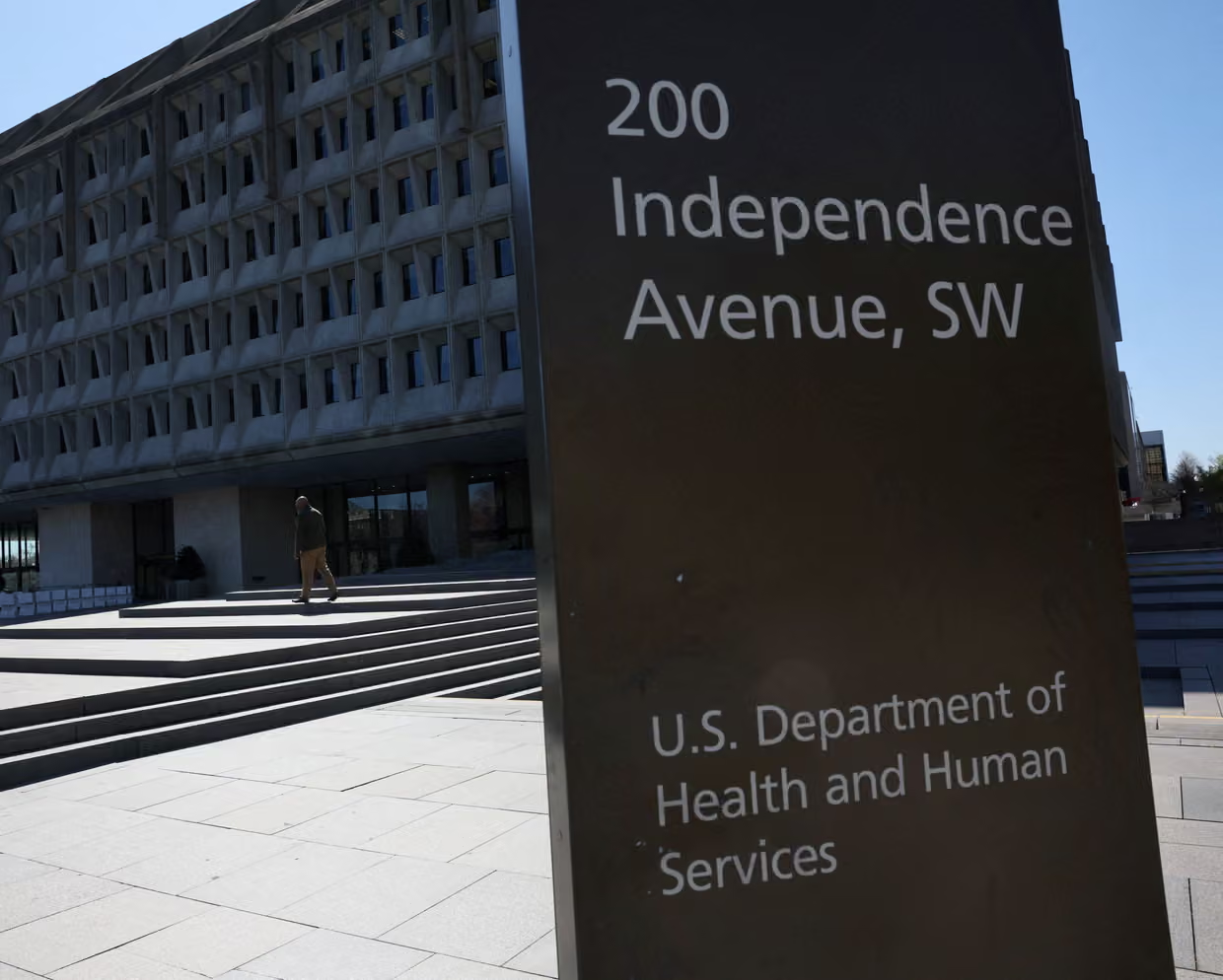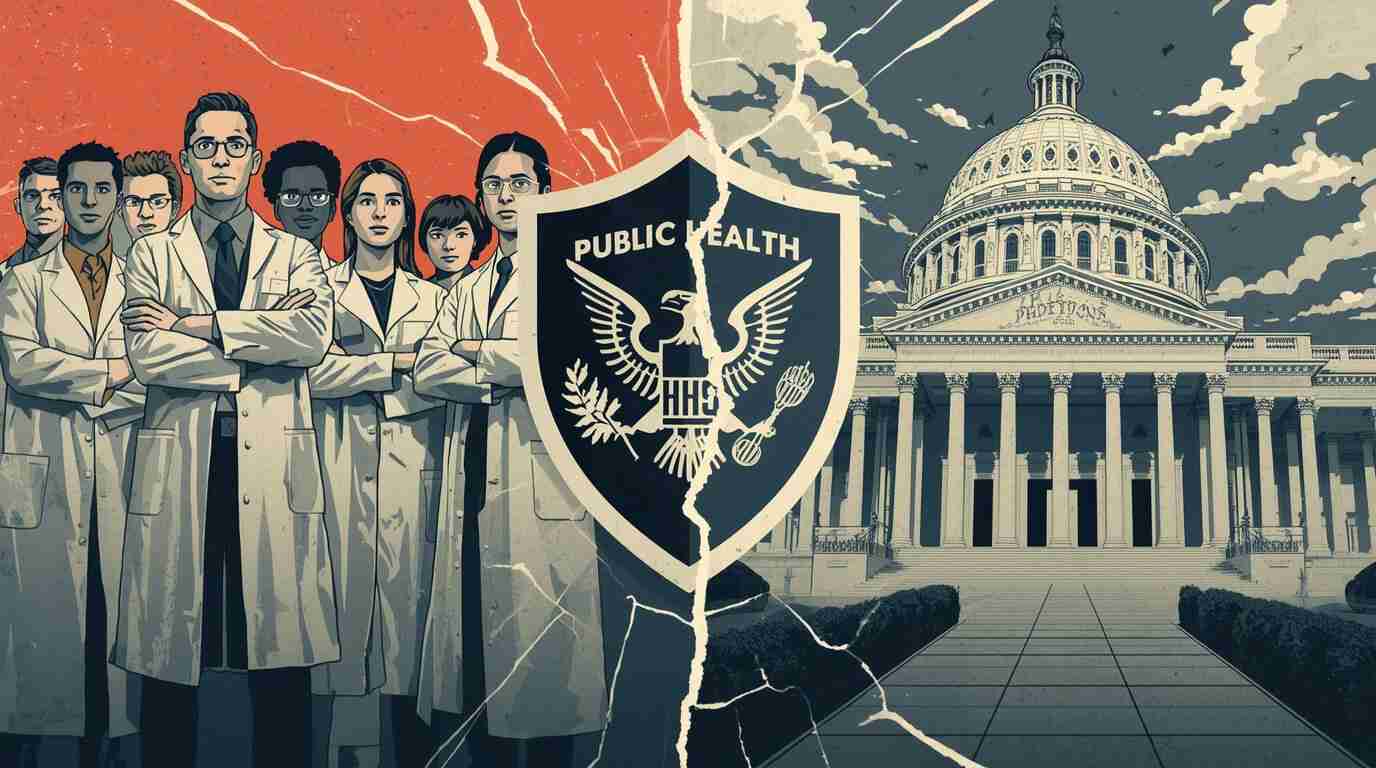Inside the HHS plan to reclassify CDC and FDA employees, the fierce union backlash, and what it means for the future of America’s health security.
What happens when the very agencies that guided America through a pandemic move to silence their own experts' voices? A seismic shift is underway within the U.S. Department of Health and Human Services (HHS), sparking a major battle over workers' rights that could weaken the foundation of our public health system.
The department is seeking to reclassify thousands of scientists, researchers, and medical officers at the CDC, FDA, and NIH, a move that would effectively strip them of their union representation and collective bargaining rights. This isn't just an internal HR policy change; it's a decision that impacts how the nation responds to health crises, retains top talent, and treats the frontline workers we all relied on during COVID-19.
In this article, we’ll break down the complex "Title 5 vs. Title 42" reclassification, explain why HHS management is pushing for it, and detail the fierce opposition from union advocates. You'll gain a clear understanding of the high-stakes implications for public health, scientific integrity, and the workforce that keeps the nation healthy.
The Breaking News: What HHS Is Proposing
In early 2024, the U.S. Department of Health and Human Services dropped a bombshell internally. It notified leadership at its sub-agencies—including the Centers for Disease Control and Prevention (CDC), the Food and Drug Administration (FDA), and the National Institutes of Health (NIH)—of a plan to change the employment classification for roughly 5,400 employees.
These aren't administrative staff; they are the core scientific and medical talent: epidemiologists who track disease outbreaks, FDA reviewers who approve life-saving drugs, and NIH researchers who pioneer new treatments. The proposal seeks to move them from the standard federal personnel system (known as "Title 5") to a special classification called "Title 42." The critical consequence? Title 42 employees are not covered by the statute that guarantees federal workers the right to form a union and bargain collectively.
Decoding the Legal Jargon
To understand why this is so controversial, you need to know the difference between these two systems.
-
This is the standard playbook for most federal employees. It provides a clear, structured framework for pay (the General Schedule or "GS" levels), job protections, promotion pathways, and, crucially, strong collective bargaining rights under the Federal Service Labor-Management Relations Statute. This allows union representatives to negotiate over everything from workplace safety and hours to grievance procedures.
-
Created by statute decades ago, this authority was designed to help health agencies compete with the private sector for world-class scientists. It allows for more flexible hiring, higher salary caps, and unique benefits packages to attract experts who might otherwise take a higher-paying job in pharmaceuticals or biotech. However, a 2020 legal opinion from the Trump-era Office of Personnel Management (OPM) interpreted the law to mean that Title 42 hires are not entitled to collective bargaining rights.
The Management Rationale: Recruitment and Flexibility
The HHS Office of the Secretary, which is pushing the plan, frames this as a necessary modernization effort. Their argument centers on recruitment and retention.
An HHS spokesperson stated that moving these roles to Title 42 provides the "flexibility needed to recruit and retain a world-class workforce with the specialized skills needed to fulfill our mission." They argue that the rigid pay scales of Title 5 put them at a severe disadvantage when trying to hire top-tier talent in competitive fields like biostatistics, genomics, and medical research. By offering more competitive, negotiated salaries and streamlined hiring processes, they believe they can better serve public health.

The Union Backlash: “An Act of Union-Busting”
Federal employee unions see the management's reasoning as a thinly veiled excuse for union-busting.
The American Federation of Government Employees (AFGE), which represents thousands of HHS workers, is leading the charge against the proposal. They argue:
-
Betrayal of Frontline Workers: This targets the very employees who worked tirelessly through the COVID-19 pandemic, often under immense stress and public scrutiny.
-
Erosion of Rights: Stripping bargaining rights removes a key voice for employees on issues like workplace safety, resource allocation, and protection from political interference.
-
A False Choice: Unions contend that agencies already have ample tools under Title 5 to offer competitive pay through special salary rates and other mechanisms. They believe the real goal is to weaken organized labor and silence dissent within the agencies.
Stakes for Public Health: Beyond the Workforce
This conflict transcends a typical labor dispute. The outcome has profound implications for American public health.
-
Scientific Independence: Collective bargaining agreements can include provisions that protect scientists' ability to publish findings and speak publicly without political censorship. A weakened union could make it easier for political agendas to influence scientific discourse.
-
Institutional Memory & Expertise: If morale plummets and experts feel devalued, they may leave for universities or private companies, leading to a "brain drain" that cripples the government's ability to respond to the next crisis.
-
Workplace Safety: Union contracts enforce safety protocols for employees working with dangerous pathogens or in high-stress environments. Without a collective voice, workers may be more vulnerable.
What’s Next? The Road to OPM’s Decision
This proposal is not a done deal. A crucial hurdle remains: HHS must get approval from the Office of Personnel Management (OPM).
As of now, OPM, which is under the Biden administration, has not issued a decision. This creates a political tightrope. The Biden White House has proudly proclaimed itself "the most pro-union administration in American history," making this HHS-led effort appear contradictory.
Unions are lobbying the White House and OPM intensely to reject the request. If OPM approves it, legal challenges are almost certain. The coming weeks will be critical in determining the fate of these thousands of federal health workers.
Q: Which specific agencies are affected?
A: The primary agencies impacted are the Centers for Disease Control and Prevention (CDC), the Food and Drug Administration (FDA), the National Institutes of Health (NIH), and the Agency for Healthcare Research and Quality (AHRQ).
Q: Why is the health department doing this?
A: HHS management states the move is to increase flexibility in hiring and salary offers to better recruit and retain top scientific talent in a competitive market. Critics, however, view it as an attempt to weaken unions and employee advocacy.
Q: Can the employees fight this decision?
A: Yes. While the employees cannot stop the proposal themselves, their unions are actively lobbying the Office of Personnel Management (OPM) to reject the HHS request. If it is approved, they are expected to file legal challenges arguing the reclassification is improper.
Q: What is the difference between Title 5 and Title 42?
A: Title 5 is the standard system for federal employees, providing structured pay and strong collective bargaining rights. Title 42 is a special authority allowing for more flexible hiring and higher pay for scientific roles but, as currently interpreted, does not grant collective bargaining rights.
The move to strip union rights from thousands of health experts is more than a policy change—it's a watershed moment for American public health. It pits the government's desire for managerial flexibility against the rights of the workforce that safeguards the nation's well-being.
The outcome will signal whether we value the collective voice of our scientists and health professionals or view them as easily replaceable assets. As the Office of Personnel Management weighs this decision, the principles of fairness, scientific independence, and workers' rights hang in the balance.
What do you think? Should the government have more flexibility to hire top experts, even if it means sacrificing collective bargaining? Or does a strong union make for a stronger, more independent public health system? Share your thoughts in the comments below.
Read more... The team at care and prayer is dedicated to providing clear, authoritative analysis of complex current events that sit at the intersection of policy, labor, and public well-being. Our content is rigorously researched and designed to keep you informed on the issues that matter most.
